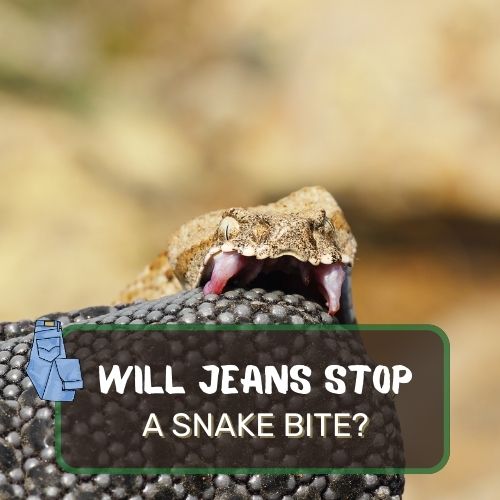
In this article, we explore the fascinating world of snakes and their unique ability to regrow fangs.
We will delve into the process of fang regrowth, the anatomy of snake fangs, and the significance of this adaptation in their survival.
Discover the factors influencing fang regrowth, the timeline for the process, and the distinctions between venomous and non-venomous snake fangs.
Additionally, we’ll delve into the intriguing world of snake dentistry and fang repair in captive settings.
Uncover the evolutionary advantages of fang regrowth, the adaptations it entails, and its impact on snake ecology and interactions with prey.
Table of Contents
- 1 Can Snakes Regrow Fangs? (Short Anwer)
- 2 How Snakes Replace Their Teeth
- 3 Anatomy of Snake Fangs
- 4 The Process of Fang Regrowth
- 5 Snakes That Regrow Fangs
- 6 Fang Loss and Fang Damage in Snakes
- 7 Fang Removal in Snakes
- 8 Snake Dentistry and Fang Repair
- 9 Evolutionary Significance of Fang Regrowth
- 10 FAQ
- 11 Final Thoughts and Summary on the Topic
Can Snakes Regrow Fangs? (Short Anwer)
Yes, snakes can regrow their fangs. Snakes possess a unique dental adaptation that allows them to shed and replace their teeth throughout their lives. When a snake’s fang becomes damaged, worn, or lost due to hunting or defensive encounters, the regenerative process is triggered. The snake’s body develops a new fang bud to replace the old one, ensuring it maintains functional fangs for hunting and defense.
The timeframe for fang regrowth varies among snake species, but generally, it takes several weeks to months for the new fang to fully mature.
This remarkable ability to regrow fangs is crucial for venomous snakes, as it ensures their continued effectiveness in subduing prey and defending themselves in the wild.
How Snakes Replace Their Teeth

Snakes have a remarkable ability to replace their teeth, and understanding this process can shed light on their unique dental capabilities. Let’s take a closer look at how these fascinating creatures manage to regrow their fangs.
Shedding and Regrowth of Teeth in Snakes
Snakes’ teeth are not fixed in their jaws like those of humans and many other animals. Instead, they are attached to a flexible ligament, allowing them to be easily shed and replaced.
This shedding process is known as “ecdysis” or more commonly as “molting.”
When a snake’s fang becomes damaged, old, or worn down, it is naturally shed through the ecdysis process. Once a fang is lost, a new one begins to grow in its place.
This continuous cycle of shedding and regrowth ensures that snakes can maintain functional fangs for hunting and defense.
Frequency of Tooth Replacement
The frequency of tooth replacement varies among snake species. Some snakes, like the venomous vipers, experience more frequent tooth replacement due to the wear and tear caused by delivering venom to their prey.
In contrast, non-venomous snakes may have a slower rate of tooth replacement since they don’t rely on their fangs for venom injection.
Interestingly, some snakes, such as the king cobra, can actively control the timing of their tooth replacement.
They can choose to expedite the process if a fang breaks during a crucial hunting period, ensuring that they are always well-equipped to catch their prey.
Different Types of Teeth in Snakes
Snakes have a diverse array of teeth, each serving different functions. Apart from the fangs used for venom delivery, they possess rows of smaller teeth in both the upper and lower jaws.
These rearward-pointing teeth, called “vestigial teeth,” help grip and secure the prey during feeding.
Anatomy of Snake Fangs

Snake fangs are marvels of evolutionary adaptation, finely tuned for hunting and subduing their prey effectively.
Structure and Composition of Snake Fangs
Snake fangs are specialized teeth, elongated and hollow to facilitate venom delivery. They are connected to venom glands, which produce and store the potent venom.
These hollow fangs act like hypodermic needles, injecting venom into the bitten prey.
The composition of snake fangs is primarily made of dentin, a hard tissue similar to human teeth, and covered by a thin layer of enamel.
This structure ensures that the fangs are both sharp and robust, capable of penetrating the prey’s flesh and delivering venom with precision.
Venom Glands and Fang Delivery Mechanisms
The venom glands are essential components of the snake’s fang apparatus. These glands produce a complex cocktail of toxins that vary between snake species.
When the snake bites its prey, the venom is forced through the hollow fangs and into the victim’s bloodstream, quickly immobilizing the prey and starting the digestion process.
Variations in Fang Types Among Snake Species
Different snake species have evolved diverse fang adaptations based on their prey and hunting strategies.
For instance, the rear-fanged snakes, like the Boomslang, possess venomous fangs located towards the back of their mouths.
In contrast, front-fanged snakes, such as vipers and cobras, have large, hinged fangs at the front, optimized for injecting venom effectively.
The Process of Fang Regrowth

The process of fang regrowth in snakes is a fascinating and intricate phenomenon influenced by various factors.
Factors Influencing Fang Regrowth
Several factors affect how quickly and efficiently a snake regrows its fangs. The snake’s age, health, and overall condition play a vital role in determining the speed of the regrowth process.
Younger and healthier snakes tend to regenerate their fangs more rapidly than older or weaker individuals.
The frequency of fang use and potential damage also impacts the regrowth process. Snakes that frequently use their fangs for hunting and defense may experience more frequent regrowth cycles due to wear and tear.
On the other hand, snakes that rarely use their fangs might have slower regrowth rates.
Timeframe for Fang Regrowth in Snakes
The timeframe for fang regrowth varies among snake species. In general, it can take several weeks to months for a snake to fully regrow its fangs after shedding the old ones.
The process begins with the development of a new fang bud, which gradually elongates and hardens until it reaches its functional length.
Comparison Between Venomous and Non-venomous Snake Fangs
Venomous and non-venomous snakes exhibit some differences in their fang regrowth patterns. Venomous snakes, which rely on their fangs for subduing prey and defense, typically have a faster regrowth rate.
Their survival depends on having functional fangs, so they have evolved to efficiently replace their venom-delivery apparatus.
Non-venomous snakes, on the other hand, might have a slower fang regrowth rate since they do not rely on venom for hunting.
Instead, their rearward-pointing teeth serve the purpose of gripping and securing prey during feeding, and they may not require as frequent fang renewal.
Snakes That Regrow Fangs

Several snake species are known for their ability to regrow fangs, and each of them demonstrates unique characteristics that aid in their survival.
Some Snake Species Known for Fang Regrowth
One well-known example of a snake that regrows its fangs is the pit viper. Pit vipers are a group of venomous snakes found in various regions around the world.
They possess large, hinged fangs located at the front of their mouths, designed to deliver venom efficiently.
Examples and Characteristics of These Snakes
The Timber rattlesnake (Crotalus horridus) is a pit viper known for its impressive fang regrowth ability.
These snakes inhabit forests and wooded areas of North America and are famous for their distinctive rattling sound, which serves as a warning signal to potential threats.
Another example is the Gaboon viper (Bitis gabonica), native to the rainforests of sub-Saharan Africa. This venomous snake is renowned for having the longest fangs of any snake species, reaching up to two inches in length.
The Gaboon viper’s fangs are hollow, allowing it to inject a large amount of venom into its prey.
Significance of Fang Regrowth in Their Survival
For venomous snakes like pit vipers, fang regrowth is crucial for their survival. Their ability to replace damaged or broken fangs ensures they remain potent predators and can continue to catch and subdue their prey effectively.
In the wild, these snakes may encounter adversaries that can cause damage to their fangs during confrontations, and their regenerative capabilities are essential for maintaining their position at the top of the food chain.
Fang Loss and Fang Damage in Snakes

Fang loss or damage in snakes can occur due to various factors, impacting their behavior and feeding patterns.
Causes of Fang Loss or Damage in Snakes
Snakes can experience fang loss or damage for several reasons. In the wild, encounters with larger or more powerful prey can lead to broken or dislodged fangs.
Additionally, aggressive interactions with other snakes or predators might result in fang damage.
Human-related activities, such as accidental injury or snake-handling, can also lead to fang loss. In some cases, snakes might intentionally break their own fangs while attempting to free themselves from entanglement.
Effects of Fang Loss on Snake Behavior and Feeding
Fang loss can significantly impact a snake’s behavior and feeding abilities. Without functional fangs, venomous snakes may struggle to immobilize and kill their prey effectively, making hunting more challenging.
This could lead to a decrease in successful hunts and potentially impact the snake’s overall health and survival.
Additionally, fang loss might affect a snake’s defensive capabilities. Some venomous snakes rely on their fangs to ward off predators, and the loss of this crucial defense mechanism could make them more vulnerable.
Regeneration of Fangs in Response to Damage or Loss
In response to fang damage or loss, snakes activate their regenerative abilities. As mentioned earlier, the process of fang regeneration begins with the development of a new fang bud.
The snake’s body initiates the growth of a replacement fang, which gradually reaches its full length over time.
While fang regeneration is an impressive adaptation, it might not always be as efficient as the original fang.
In some cases, the new fang might be slightly different in shape or size, affecting the snake’s hunting and venom delivery abilities until the new fang fully matures.
Fang Removal in Snakes

Fang removal in snakes is a controversial practice that occurs in captivity for various reasons.
Reasons for Fang Removal in Captive Snakes
Fang removal is sometimes performed on captive snakes, particularly those kept in zoos, research facilities, or as pets.
The reasons for fang removal can vary and may include concerns related to public safety, research purposes, or handling ease during veterinary procedures.
Controversy and Ethical Considerations Surrounding Fang Removal
The practice of fang removal is met with significant controversy and ethical considerations. Critics argue that removing a snake’s fangs can severely compromise its quality of life, as fangs are essential for hunting and self-defense.
Some consider it a form of animal cruelty, denying the snake its natural abilities.
Advocates of fang removal, on the other hand, argue that it can be necessary for managing potentially dangerous snakes in captivity, reducing the risk of venomous bites to handlers, and protecting the public.
Long-term Effects and Consequences of Fang Removal
The long-term effects of fang removal on snakes are a subject of ongoing research and debate. Some studies suggest that snakes can adapt to fang removal over time by relying on other hunting techniques or modes of defense.
However, the impact on the snake’s overall well-being and its ability to behave naturally remains a concern.
As with any invasive procedure, fang removal should be approached with caution and consideration of the individual snake’s needs and well-being.
Snake Dentistry and Fang Repair

In captive settings, snake dentistry and fang repair have emerged as specialized veterinary procedures to address fang damage or loss.
Veterinary Approaches to Fang Repair in Captive Snakes
When snakes experience fang damage or partial fang loss in captivity, specialized veterinarians may attempt fang repair. The procedure involves delicate and precise work to reconstruct or repair the damaged fang.
Depending on the severity of the injury, the veterinarian may use bonding agents or even dental implants to restore the fang’s functionality.
Challenges and Limitations of Fang Repair Procedures
Snake dentistry and fang repair present unique challenges due to the complex anatomy of snake fangs. The small size and delicate structure of the fangs require exceptional skill and experience on the part of the veterinarian.
Additionally, ensuring that the repaired fang functions correctly and without causing harm to the snake is a critical consideration.
Furthermore, fang repair procedures are not always successful, and the outcome may vary depending on the individual snake and the extent of the damage.
Success Rates and Outcomes of Fang Repair in Snakes
The success rates of fang repair procedures in snakes vary widely.
While some snakes may regain functional fangs and resume their normal feeding behavior, others may experience complications or challenges in adapting to the repaired fangs.
The overall outcome of fang repair depends on factors such as the snake’s species, age, health, and the extent of the damage.
It is essential for veterinarians to carefully assess the risks and benefits of fang repair, considering the welfare of the snake and the potential long-term implications.
Evolutionary Significance of Fang Regrowth

The ability of snakes to regrow their fangs holds significant evolutionary advantages that contribute to their survival and ecological interactions.
Evolutionary Advantages of Fang Regrowth in Snakes
Fang regrowth provides snakes with a remarkable adaptation for surviving in their respective environments.
The continuous renewal of fangs ensures that venomous snakes can maintain their hunting efficiency, securing prey and defending themselves against threats.
By being able to regenerate their fangs, snakes have an evolutionary advantage over their prey, which often lacks such regenerative capabilities.
This allows snakes to remain potent predators even after sustaining fang damage during confrontations with struggling or large prey.
Adaptations and Survival Strategies Related to Fang Regrowth
The process of fang regrowth is an integral part of the overall survival strategy of venomous snakes. Their ability to recover from fang damage ensures they are well-equipped to hunt and subdue their prey consistently.
It also enables them to adapt to changing ecological conditions and continue thriving in their habitats.
Impact on Snake Ecology and Interactions with Prey
Fang regrowth influences snake ecology and interactions with their prey in several ways. Snakes with functional fangs can efficiently immobilize and inject venom into their prey, leading to swift kills and improved energy efficiency.
This has cascading effects on prey populations and predator-prey dynamics within ecosystems.
Furthermore, the presence of venomous snakes with regenerative fangs can influence the behavior of other animals, leading to adaptations in their avoidance strategies and defensive mechanisms.
FAQ
What Happens If a Snake Loses a Fang?
If a snake loses a fang due to injury, predation, or other factors, the regenerative process is initiated. The snake’s body develops a new fang bud to replace the lost one. During this period, the snake may experience some challenges in hunting or self-defense, but once the new fang matures, it will regain its functional abilities.
How Long Does It Take for a Snake to Regrow a Fang?
The timeframe for fang regrowth varies among snake species and individual snakes. In general, it can take several weeks to several months for a snake to fully regrow its fang after shedding the damaged one. The exact duration depends on factors such as the snake’s age, health, and environmental conditions.
Can a Snake Live Without Its Fangs?
While a snake can survive without its fangs, it would face significant challenges in hunting and defense. Fangs are crucial tools for venomous snakes to subdue their prey and protect themselves from threats. Without functional fangs, venomous snakes may struggle to immobilize and inject venom into their prey effectively, affecting their survival in the wild.
What Do Snakes Use Their Fangs For?
Snakes use their fangs primarily for hunting and defense. Venomous snakes utilize their fangs to inject venom into their prey, paralyzing or killing it before ingestion. Fangs are also employed as a potent defensive mechanism to deter potential predators or threats.
What Are Snake Fangs Made From?
Snake fangs are primarily composed of dentin, a hard tissue similar to human teeth. The fangs are covered by a thin layer of enamel, which provides strength and durability. This unique structure makes snake fangs both sharp and robust, enabling them to penetrate the flesh of their prey effectively.
Final Thoughts and Summary on the Topic
The ability of snakes to regrow their fangs is a remarkable example of adaptation and survival in the animal kingdom.
The shedding and regrowth of snake fangs play a critical role in their hunting efficiency, allowing venomous species to maintain their position as top predators.
Understanding the anatomy and function of snake fangs provides valuable insights into their ecological roles and interactions with prey and predators.
While fang removal in captive settings remains a topic of controversy, snake dentistry and fang repair procedures have shown potential in addressing fang damage and supporting the well-being of snakes under human care.
The process of fang regrowth has evolutionary significance, providing snakes with a unique advantage over their prey and contributing to the delicate balance of ecosystems.
This remarkable adaptation highlights the diversity and complexity of nature’s solutions to survival challenges.
In conclusion, snakes’ ability to regrow their fangs exemplifies the wonders of nature’s adaptive mechanisms.
From their specialized anatomy to their behavioral strategies, snakes continue to captivate us with their remarkable abilities and their important role in maintaining the balance of the natural world.




0 Comments